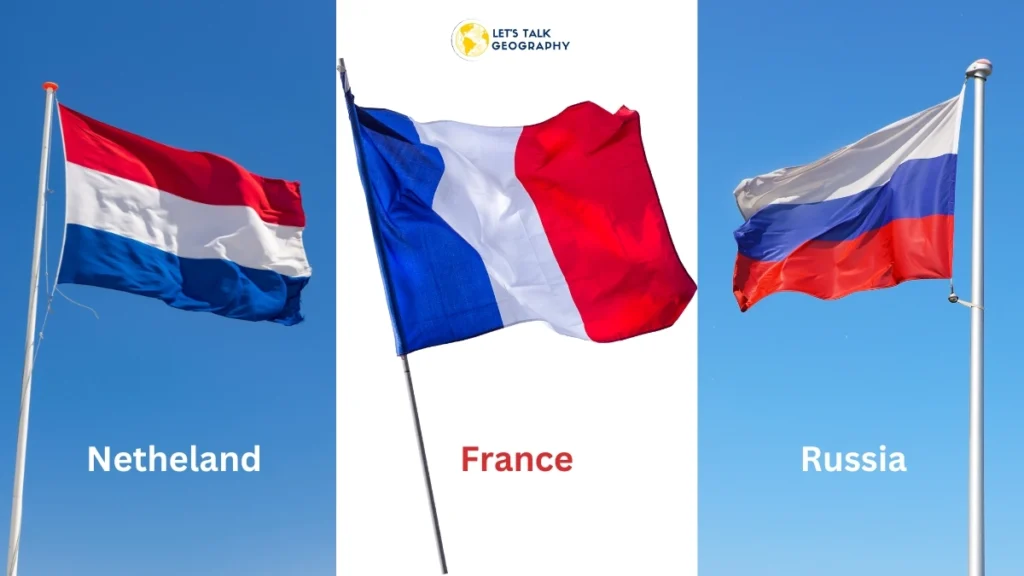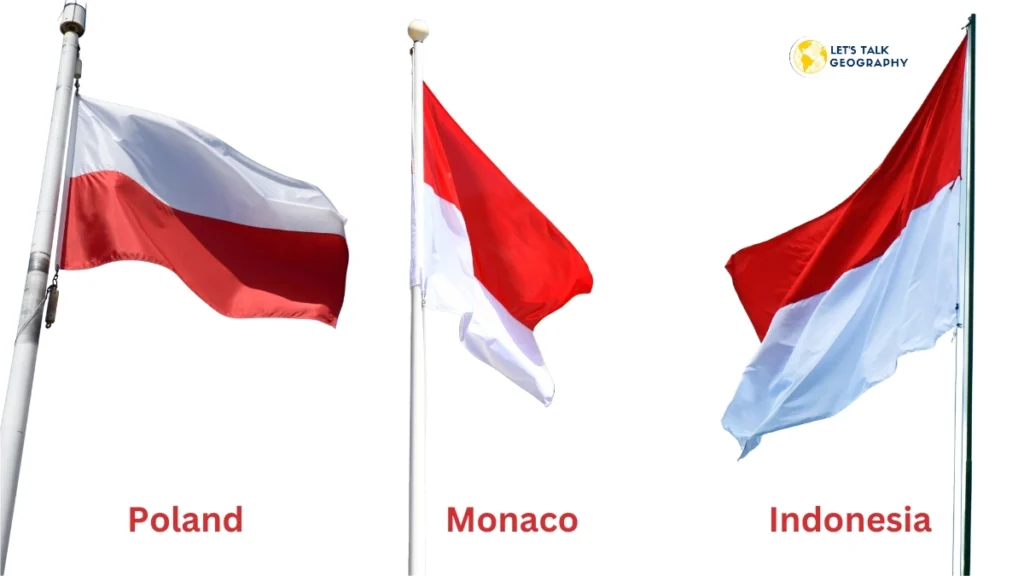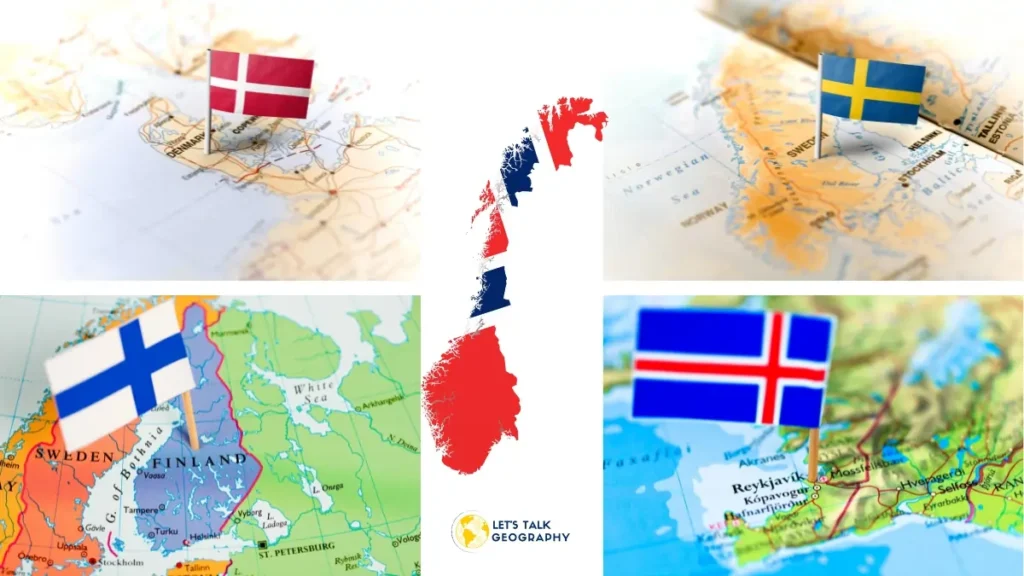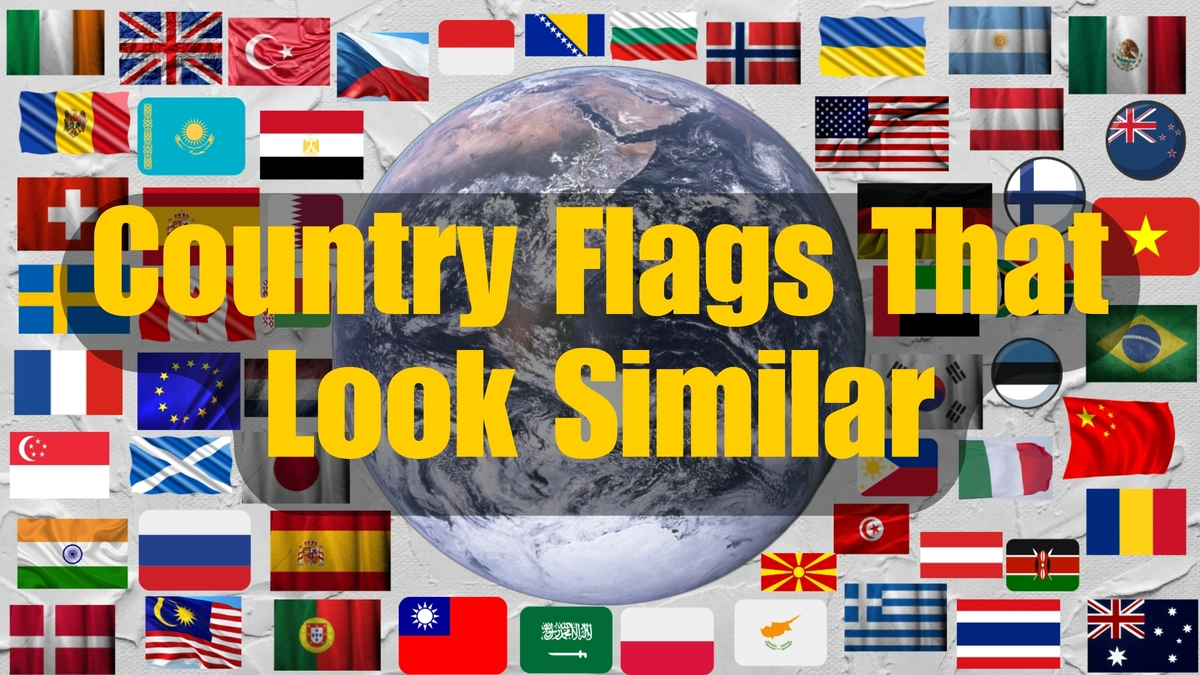Introduction:
Flags represent a country’s identity, history, and values. With over 190 countries worldwide, it is not enchanting that some national flags resemble each other. This occurrence is due to past connections, shared cultural or religious symbols, or coincidental similarities in design and color.
National flags symbolize a country’s identity, unity, and sovereignty. They embody a nation’s history, culture, and values, offering a unifying emblem for its citizens. Flags are flown during national celebrations, international events, and solemn occasions in response to patriotism and pride.
The primary justification of this article is to add the significance of national flags and their function in representing a nation’s identity, history, and values. By exploring the importance of these symbols, the article aims to foster a more profound interpretation and appreciation of the flags that unite and inspire people worldwide.
Overview of historical influences on flag design:
The striking similarities among country flags that look alike aren’t mere coincidences. They often stem from intertwined historical narratives, practical constraints, and shared symbolic language. Past events, cultural heritage, and political movements deeply govern the design and sculpture of national flags. Many flags reflect crucial movements in a country’s history or remember victories, revolutions, or periods of independence.
Cultural and religious influences also play a critical role in flag design. The crescent and star on the flags of many Islamic countries, such as Turkey and Pakistan, signify their Islamic heritage. The Christian cross appears on the flags of numerous European nations, including the United Kingdom, Norway, and Sweden, reflecting their historical connection to Christianity.
Revolutionary symbols often inspire flag designs during periods of political upheaval. The red color in many flags, such as those of China and the former Soviet Union, symbolizes revolution and the struggle for freedom. The green color in the flag of many African nations represents the continent’s rich natural resources and the aspiration for growth and development. National flags are rich tapestries woven from historical, cultural, and political threads.
Common themes in flag design (colors, symbols, patterns):
The most popular is the “three-striped tribar layouts.” The first reason is that stitching three strips of fabric together is straightforward. The second reason traces back to the 18th century when it was expected to represent a kingdom or person by taking the colors from their coat of arms and arranging them as horizontal stripes on a flag. One of the earliest flags to adopt this design was the Netherlands flag, which became a model for flags across Europe. Peter the Great further spread this layout eastward by creating the Russian flag as a variation of the Dutch flag.
Red, blue, and white influence the colors of the world’s flags- The flag of a related country often influences a flag’s colors. For example, the United States uses the red, white, and blue colors from the United Kingdom’s flag. “Certainly, Great Britain and France have passed on red, white, and blue to their colonies and former colonies,” says Kaye. However, this is not always the case. Sometimes, the colors are chosen in opposition to a colonial power. For instance, the African National Congress (a political party in South Africa) uses black, yellow, and green—colors that contrast with those of the Dutch and the English flags.
● The Particular Meaning of Colors:
Descriptions of flags featuring the color red often include terms like “independence” or “sovereignty,” which fall under the category of “struggle.” However, Birger and Jeppe tell CityLab that different countries have their interpretations of these colors, and even within a single country, these interpretations can vary. Kaye also notes that the meanings attributed to flag colors are frequently assigned after adopting the flag.
● Most commonly used symbols:
Kaye said the United States was the first to use a five-pointed star on its flag. Some believe this design was inspired by George Washington, who had the symbol on his coat of arms. Before the U.S. flag, stars were typically depicted with six or more points, resembling how stars twinkle in the sky. Kaye explains that a star represents the individual parts of a country. This symbol is now widely used to signify independence—as seen with the Lone Star of Texas, derived from the American flag—and the various components that make up a nation.
Read Also: Top 10 Tallest Mountains of North America: Don’t Miss These Gigantic Peaks
Influence of Colonial History:
Colonialism has constantly affected the design of many national flags in response to the complex past and rapport among the colonizing powers and their colonies. Many flags of earlier colonies incorporate parts of their colonial rulers’ flags, mentioning both past connections and transformation to independence. For instance, many countries once a part of the British Empire mention the Union Jack or its parts among their flags. For example, Australia, New Zealand, and Fiji implemented the Union Jack in their structures to acknowledge their historical links to Britain while mentioning their specific national identifications.
Limited Color Palette and Simple Designs:
In the past, practical considerations greatly influenced flag designs. The availability of dyes and the ease of reproducing intricate patterns could have been improved. As a result, many flags adopted simple designs with a limited color palette. Common colors like red, white, and blue became prevalent due to their symbolism and ease of recognition. Red signifies courage and sacrifice, white represents peace and purity, and blue symbolizes liberty and justice. These colors transcended cultural boundaries and found their way into the flags of numerous countries worldwide.
Heraldry and Symbolic Language:
Heraldry, the practice of designing coats of arms, has also played a crucial role in developing national flags. Many countries incorporated elements from their coats of arms into their flags, utilizing symbols with universal meanings. For example, the cross, a prominent Christian symbol, appears in the flags of many European nations, signifying their religious heritage. Animals like lions, eagles, and bears often represent strength and courage, while stars symbolize unity and aspiration. These heraldic symbols, steeped in history and tradition, contribute to the similarities observed in country flags that look alike.
Country Flags That Look Alike:
● The Tricolor Trio: Netherlands, France, Russia:
With its red, white, and blue horizontal bands, the Dutch tricolor is a flag steeped in history. Emerging during the Dutch Revolt against Spanish rule in the late 16th century, it symbolized national pride and liberty. This iconic design would later inspire the flags of both France and Russia.

The French tricolor, adopted during the French Revolution, mirrors the Dutch design with a vertical orientation. The colors symbolize the values of liberty, equality, and fraternity. Similarly, the Russian tricolor, adopted in the late 17th century, follows the Dutch pattern but with different proportions for the stripes.
● Red and White Duos: Indonesia, Monaco, Poland:
The simplicity of a red and white flag can be both striking and memorable. Indonesia, Monaco, and Poland all sport this classic bicolor design, though with subtle variations. Indonesia’s red and white flag draws inspiration from the Majapahit Empire, a powerful 13th-century Javanese kingdom.

Monaco’s flag mirrors the Indonesian design but with a slightly different aspect ratio, reflecting its unique history as a sovereign city-state. Poland, meanwhile, inverts the colors, placing white over red, harking back to its medieval heraldry. These country flags that look alike exemplify how simple color combinations can evoke strong national pride and historical connections.
● Pan-Slavic Colors: Russia, Slovenia, Slovakia:
The Pan-Slavic colors – red, white, and blue – are another recurring theme in flag design, particularly among Slavic nations. As mentioned, the Russian flag features these colors in a horizontal tricolor pattern. Slovenia and Slovakia, both Slavic countries, adopted similar tricolors in the late 20th century, reflecting their shared cultural heritage. However, both flags feature unique symbols: Slovenia’s flag includes Mount Triglav and three stars, while Slovakia’s flag features a double cross on a hill.
● Scandinavian Crosses: Denmark, Sweden, Norway, Finland, Iceland:
The Scandinavian countries are renowned for their strikingly similar flags, each featuring a bold Nordic cross design. This cross, often offset to the left, symbolizes Christianity and is deeply rooted in the region’s history. While the design is consistent, each country’s flag boasts unique colors and proportions.

- Denmark: The oldest of the Nordic flags, the “Dannebrog,” is a simple white cross on a red background. Legend states that the flag fell from the sky during a 13th-century battle.
- Sweden: The Swedish flag features a golden cross on a blue field. Its design is said to be inspired by the Danish flag but with the colors inverted.
- Norway: The Norwegian flag combines the colors of its neighbors, featuring a white-bordered blue cross on a red field. It was adopted in 1821 after gaining independence from Denmark.
- Finland: The Finnish flag, known as the “Siniristilippu,” boasts a white-bordered blue cross on a white background. It was adopted in 1918 after gaining independence from Russia.
- Iceland: The Icelandic flag, adopted in 1918, features a red cross bordered by white on a blue field, representing the island’s volcanic origins.
● Colors of Islam: Turkey, Tunisia, Algeria:
The flags of Turkey, Tunisia, and Algeria share a common motif: a white crescent moon and star on a red background. This design is deeply rooted in Islamic tradition, with the crescent representing the lunar calendar and the star symbolizing divine guidance. However, each flag has distinct variations in color and star placement.
- Turkey: The Turkish flag, known as the “Ay Yıldız” (moon and star), features a white crescent moon and a five-pointed star on a bright red background. It was adopted in 1844 and has remained largely unchanged since.
- Tunisia: The Tunisian flag, adopted in 1831, closely resembles the Turkish flag but with a slightly larger crescent moon and a smaller, five-pointed star closer to the center.
- Algeria: The Algerian flag, adopted in 1962 after gaining independence from France, features a green vertical band on the hoist side (the side closest to the flagpole) and a white crescent moon and star on a red background. The green symbolizes Islam, while the red and white represent the nation’s struggle for freedom.
● Stars and Stripes: United States, Liberia, Malaysia:
The United States, Liberia, and Malaysia may seem like an unlikely trio, but their flags share a common theme: stripes and stars. While the symbolism and historical context differ, the shared motif is a testament to the interconnectedness of nations.
- United States: The American flag, often called the “Stars and Stripes,” features thirteen horizontal stripes representing the original thirteen colonies and fifty white stars representing the states. It was adopted in 1777 and has undergone numerous modifications as new states joined the union.
- Liberia: The Liberian flag, adopted in 1847, resembles the American flag. It features eleven red and white stripes representing the signatories of the Liberian Declaration of Independence and a single white star representing the country’s freedom. Liberia was founded by freed American slaves, whose flag reflects its historical ties to the United States.
- Malaysia: The Malaysian flag, known as the “Jalur Gemilang” (Stripes of Glory), features fourteen red and white stripes representing the thirteen states and the federal government. A yellow crescent moon and a fourteen-pointed star symbolize Islam and the country’s unity.
● Norway and Iceland:
On February 27, 1814, Crown Prince Christian Frederick created the first distinctive Norwegian national flag to symbolize local opposition to Swedish rule imposed on Norway. This flag featured the red Danish flag with its white cross, which was long used in Norway, and added the Norwegian arms—a golden crowned lion holding an ax—in the upper hoist canton. Designed by Frederik Meltzer, the new pattern consisted of the white cross on red, similar to the Danish flag, but with a blue cross superimposed for distinction.
In the early 20th century, the approval of the king of Denmark was sought for a local Icelandic flag. Royal approval was granted on the condition that the flag be distinct from any existing flags and always flown subordinate to Denmark’s national flag. A red cross was added to the blue flag, and a white Scandinavian cross was proposed by Icelandic political parties to incorporate the colors of Denmark.
● Ireland and Ivory Coast:
The national flag of the Republic of Ireland (Irish: An Bhratach Náisiúnta), commonly known as the tricolor, features vertical stripes of green, white, and orange. The green stripe, positioned at the hoist, symbolizes the Gaelic tradition, while the orange stripe represents the supporters of William of Orange. The white stripe in the center signifies a lasting truce between the ‘Green’ and the ‘Orange.’ The flag’s proportions are 1:2, with its length twice its width.
The national flag of Ivory Coast (French: Drapeau de la Côte d’Ivoire) is a tricolor flag with equal vertical bands of orange (hoist side), white, and green. The flag’s proportions are 2:3. It serves as the national emblem of the Republic of Ivory Coast, as established in Article 29 of the Constitution in 1960.
Although the flags of Ireland and Ivory Coast both feature green, white, and orange stripes, the colors hold different symbolic meanings and represent distinct elements of each country’s history and culture.
● Romania and Chad:
On June 22, 1861, Romania adopted a horizontal tricolor of red, yellow, and blue, with blue streamers flying above it. In late December 1989, the design was modified to feature three vertical blue, yellow, and red stripes. Although the traditional eagle coat of arms was reinstated in 1992, it has not been officially added to the flag.
A new design was submitted in November 1959 and approved by acclamation on the 6th of that month. The dark blue stripe, which replaced the original green, is said to symbolize hope and the sky. Yellow represents the sun and red stands for the nation’s unity.
The flags of Romania and Chad are nearly identical. The primary difference is that Romania defines its colors more precisely than Chad, resulting in slight variations in shading. Chad adopted its current flag in 1960, following its independence from France.
Conclusion:
In a world rich with diverse cultures and histories, it’s fascinating to observe the similarities between the flags of different countries. These resemblances often stem from shared histories, cultural connections, or historical influences, such as colonialism and revolutionary movements.
While flags are undoubtedly emblems of national pride and identity, they also serve as visual clues to a shared human story. The colors, patterns, and symbols adorning these banners can tell tales of colonization, revolution, religious influence, and even simple practicality. Though simple in their design, flags symbolize identity and unity, reminding us of our commonalities and unique heritages. While similar in design, each flag carries unique meanings and significance, reflecting its nation’s distinct identity and values.
By delving into the fascinating world of vexillology and the study of flags, we can gain a new appreciation for the stories woven into the fabric of our national symbols.
FAQs:
Why do some country flags look so similar?
Several factors contribute, like shared historical ties, common cultural influences, limited color palettes for early flag designs, and the use of universal symbols.
Are there any country flags that are the same?
No, no two national flags are completely identical. However, many share striking similarities in colors, patterns, and symbols.
Is it illegal for countries to have similar flags?
There are no international laws against similar flags. However, countries might avoid confusion or copyright issues.
Do similar flags always indicate a connection between countries?
Not always. While similar flags can suggest shared history or cultural influence, sometimes the resemblance is purely coincidental.
What is the study of flags called?
Vexillology is the scholarly study of flags, their history, symbolism, and design.
What are some of the most common symbols used on flags?
Common flag symbols include stars (representing unity or states), crosses (religious or cultural significance), and stripes (often symbolizing colonies or original states).
References:
- Smith, W. (2018). Flag of Iceland. In Encyclopedia Britannica.
- Smith, W. (2018b). flag of Norway. In Encyclopedia Britannica.
- File: Flag of Ireland.Svg. (n.d.). Wikimedia.org. Retrieved May 22, 2024, from https://commons.wikimedia.org/wiki/File:Flag_of_Ireland.svg
- Smith, W. (2011). Flag of Romania. In Encyclopedia Britannica.
- Smith, W. (2013). Flag of Chad. In Encyclopedia Britannica.
- (N.d.). Bloomberg.com. Retrieved May 22, 2024, from https://www.bloomberg.com/news/articles/2016-04-15/denmark-artist-jeppe-morgenstjerne-s-flag-stories-infographic-examines-the-design-of-national-flags

